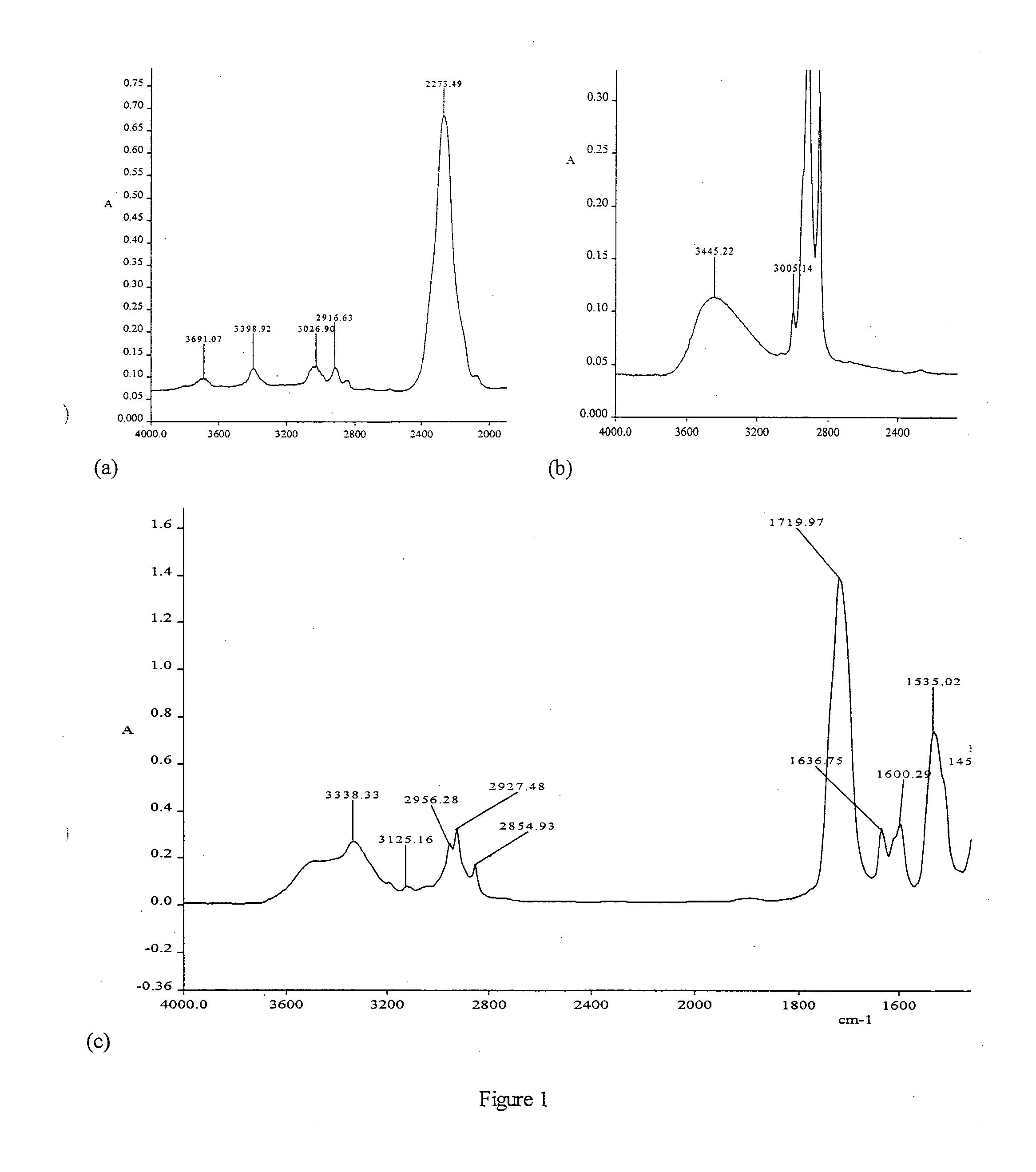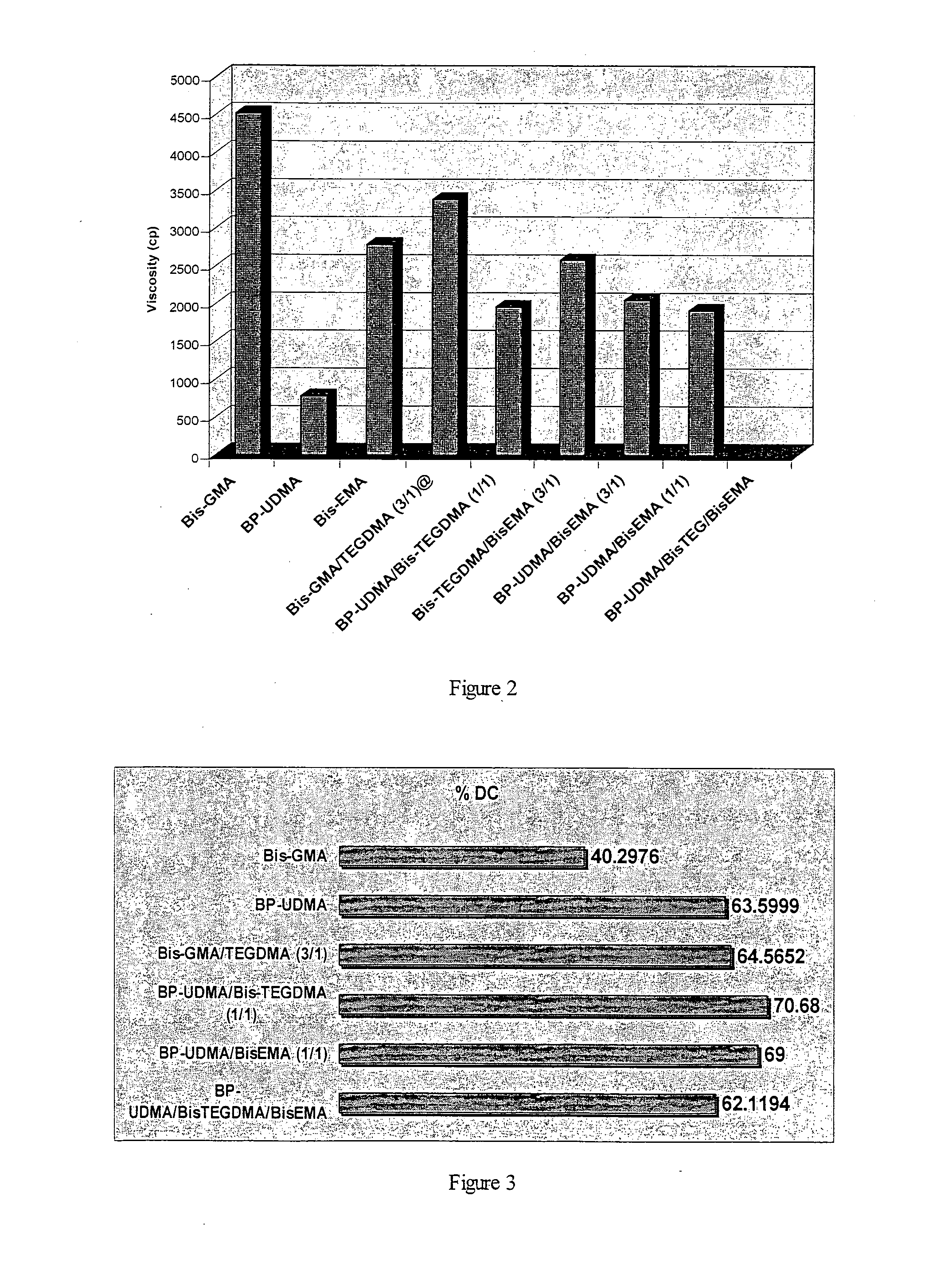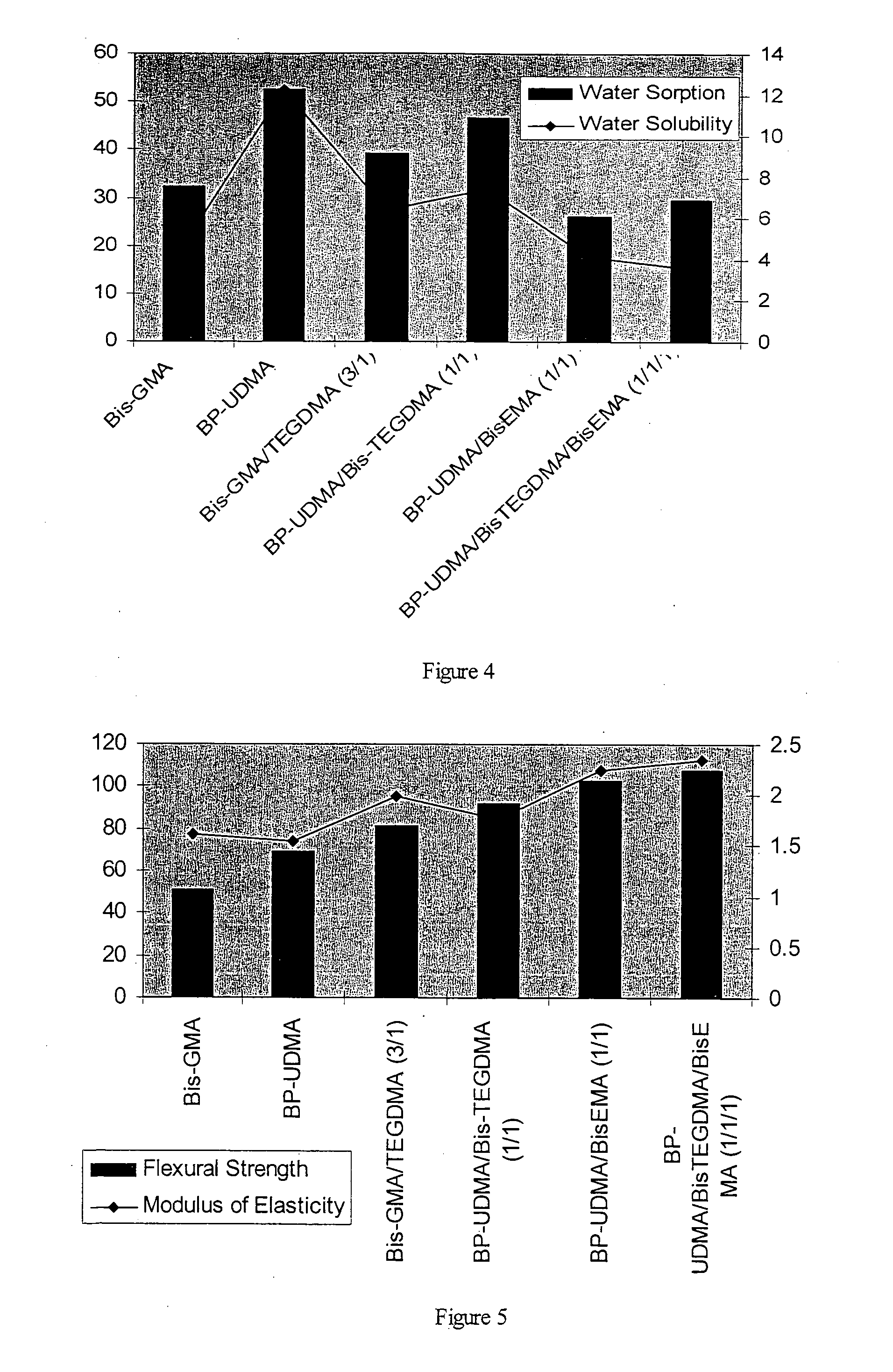Polyurethane oligomers for use in restorative dentistry
a polyurethane oligomer and restorative dentistry technology, applied in the field of composite materials for use in dental restorations, can solve the problems of compromising durability, not being suitable as a substitute for dental restorations in stress-bearing areas, and not being as effective as dental amalgam in providing durable and long life, etc., to achieve better mechanical strength and dimensional stability, improve the crosslinking density, and reduce the toxicity and possible allergy reactions of dental materials
- Summary
- Abstract
- Description
- Claims
- Application Information
AI Technical Summary
Benefits of technology
Problems solved by technology
Method used
Image
Examples
example 1
[0061]The composition of materials used for making one of this biopol is given in Table 1.
TABLE 1MaterialWeight / gOleic acid1840.0Phthalic anhydride412.0Glycerol580.0
[0062]Glycerol and phthalic anhydride were placed into the reaction flask fitted with a Dean and Stark tube and a stirrer. The mixture was stirred at 150-250 rpm and heated at 80-110° C. for about 2 hours, until all the phthalic anhydride has dissolved into the glycerol and reacted to form half ester, without evolution of water. Oleic acid was then added and the temperature raised gradually to 180-210° C. over 2 hours and maintained at 210-220° C. The water generated was collected at the decanter arm. The reaction has approached completion when the total amount of water collected was around 97 g and the acid value has dropped below 5 mgKOH g−1. The product is a non-vicious light yellowish liquid with a hydroxyl value of around 134 mgKOH g−1.
[0063]A plausible structure of the biopol described in Example 1 is as shown belo...
example 2
[0064]The process to produce one of the BP-UMA comprises of (i) reacting excess amount of diisocyanate with polyol to provide a polyurethane prepolymer, containing terminal —CNO and (ii) reacting the polyurethane prepolymer with an acrylic monomer having a hydroxyl group such as HEMA to provide BP-UDMA. 50 g of MDI was first poured into 500-ml rounded flask and was purged with nitrogen for 5 mints to expel any moisture in the air of the flask. The flask then was heated to 60° C., under constant moderate stirring (100-200 rpm), using mechanical stirrer. 26 g of palm oil-based polyol (as described in Example 1) was added to the MDI drop-wise using dropper under nitrogen atmosphere, and the mixture was stirred for another 30 mints after all of the polyol had been added into the MDI. The mixture was cooled down to 10° C. using an ice bath, and 90 g of HEMA, which was already mixed with 0.1 g of hydroquinone and 0.05 g of dibutyl tin dilurate (a urethane catalyst), was added into the rea...
example 3
[0069]With the aim to characterize the BP-UDMA monomer and investigate its application for dental resin and composite, the experimental visible light cured samples (monomers, resins, and composites) were prepared, using the commercial materials showed in table 2.
TABLE 2ChemicalComponentnomenclatureAcronymSourcesBase monomerBis-GMA (2,2-bis[4-(2-Bis-GMAEssington,hydroxy-3-Pennsylvania,methacryloxyprop-USA1-oxy)phenyl]propane)Ethoxylated bisphenol ABis-EMAEssington,dimethacrylatePennsylvania,USAUrethane dimethacrylateUDMAEssington,Pennsylvania,USADiluentHydroxyethylHEMASigma-Aldrichmonomermethacrylatetriethylene glycolTEGDMAEssington,dimethacrylatePennsylvania,USA.PhotoinitiatorCamphorquinoneCQSigma-AldrichsystemEthyl-4-N,N-4ESigma-AldrichdimethylaminobenzoateFillerBarium BorosilicateEssington,glassPennsylvania,USAEsthet. XDentsply,flowableKurrarycomposite
[0070]The unfilled visible light curable samples contain one monomer or a mixture of 2 more monomers (resin) without filler. The we...
PUM
| Property | Measurement | Unit |
|---|---|---|
| Weight | aaaaa | aaaaa |
| Weight | aaaaa | aaaaa |
| Weight | aaaaa | aaaaa |
Abstract
Description
Claims
Application Information
 Login to View More
Login to View More - R&D
- Intellectual Property
- Life Sciences
- Materials
- Tech Scout
- Unparalleled Data Quality
- Higher Quality Content
- 60% Fewer Hallucinations
Browse by: Latest US Patents, China's latest patents, Technical Efficacy Thesaurus, Application Domain, Technology Topic, Popular Technical Reports.
© 2025 PatSnap. All rights reserved.Legal|Privacy policy|Modern Slavery Act Transparency Statement|Sitemap|About US| Contact US: help@patsnap.com



